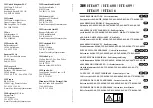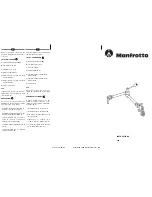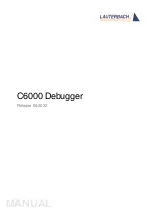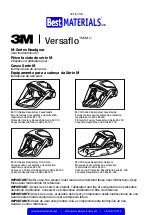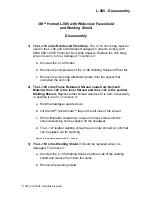
-46-
v6.3
Hardware
The RTC chosen is the Maxim
DS3231SN
, which operates at a frequency of
32.768Hz
(a second divisor value which allows it to
quantify and calculate time variations with high precision).
The DS3231SN is one of the most accurate clocks on the market because of its internal compensation mechanism for the
oscillation variations produced in the quartz crystal by changes in temperature (
Temperature Compensated Crystal Oscillator
– TCXO
).
Most RTCs on the market have a variation of ± 20ppm which is equivalent to a 1.7s loss of accuracy per day (10.34min/year),
however, the model chosen for Waspmote has a loss of just
± 2ppm
, which equates to variation of 0.16s per day (1min/year).
The first figure above shows the temperature variation curve in a typical commercial clock, and the second figure, that for the
DS3231SN model built into Waspmote. As can be seen, variations in accuracy are practically zero at room temperature and
minimal when moved to the ends of the temperature scale.
(For more information about clock calibrating methods in real time, consult web page:
http://www.maxim-ic.com/appnotes.cfm/an_pk/3566)
The recalibration process of the oscillation crystal is carried out thanks to the data received by the RTC’s
internal temperature
sensor
. The value of this digital sensor can be accessed by Waspmote through the I2C bus, which lets it know the
temperature
of the board
at anytime in the range of
-40ºC to +85ºC
with an accuracy of 0.25°C. For more information about the acquisition
of this value by the microprocessor, see the section “Sensors in Waspmote
→
Temperature”.
Note:
the RTC’s internal temperature sensor is only meant for the time derive compensation, but not for common air temperature
sensing (we advise our Sensor Boards for that).
The RTC is powered by the battery. When the mote is connected, the RTC is powered through the battery, but take into account
that if the battery is removed or out of load, then time data will be not maintained. That is why we suggest to use RTC time like
‘relative’ and not ‘absolute’ (see Programming Guide for more info).
A coin or button battery is not needed. They have a limited life and therefore Waspmote can have a much longer power life
expectancy. This is so because the RTC is powered from the “main” battery which has a much bigger charge.
The RTC is responsible for waking Waspmote up from 2 of the maximum energy saving modes
Deep Sleep
and
Hibernate
. This
makes possible for the Waspmote to use its battery just to power the RTC in sleep modes. The RTC controls when it has to wake
Waspmote up and perform a particular action. This allows a consumption of
0.06μA
to be obtained in the Hibernate mode. See
sections “Energy System”
→
Sleep mode and Deepsleep mode”.
Related API libraries:
WaspRTC.h
,
WaspRTC.cpp
All information about their programming and operation can be found in the document:
RTC Programming Guide.
All the documentation is located in the
in the Libelium website.
Figure: Uncompensated variation curve
Figure: Compensated variation curve
Source: Maxim-ic.com
Содержание Waspmote
Страница 1: ...Waspmote Technical Guide ...
Страница 11: ... 11 v6 3 Waspmote Kit Connect the battery in Waspmote Connect the sensor board Switch it on ...
Страница 59: ... 59 v6 3 Sensors Vibration Acceleration Free fall ...
Страница 79: ... 79 v6 3 LoRa Figure Channel frequencies in the 868MHz band Figure Channel frequencies in the 900MHz band ...
Страница 98: ... 98 v6 3 RFID NFC ...
































